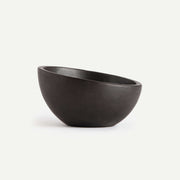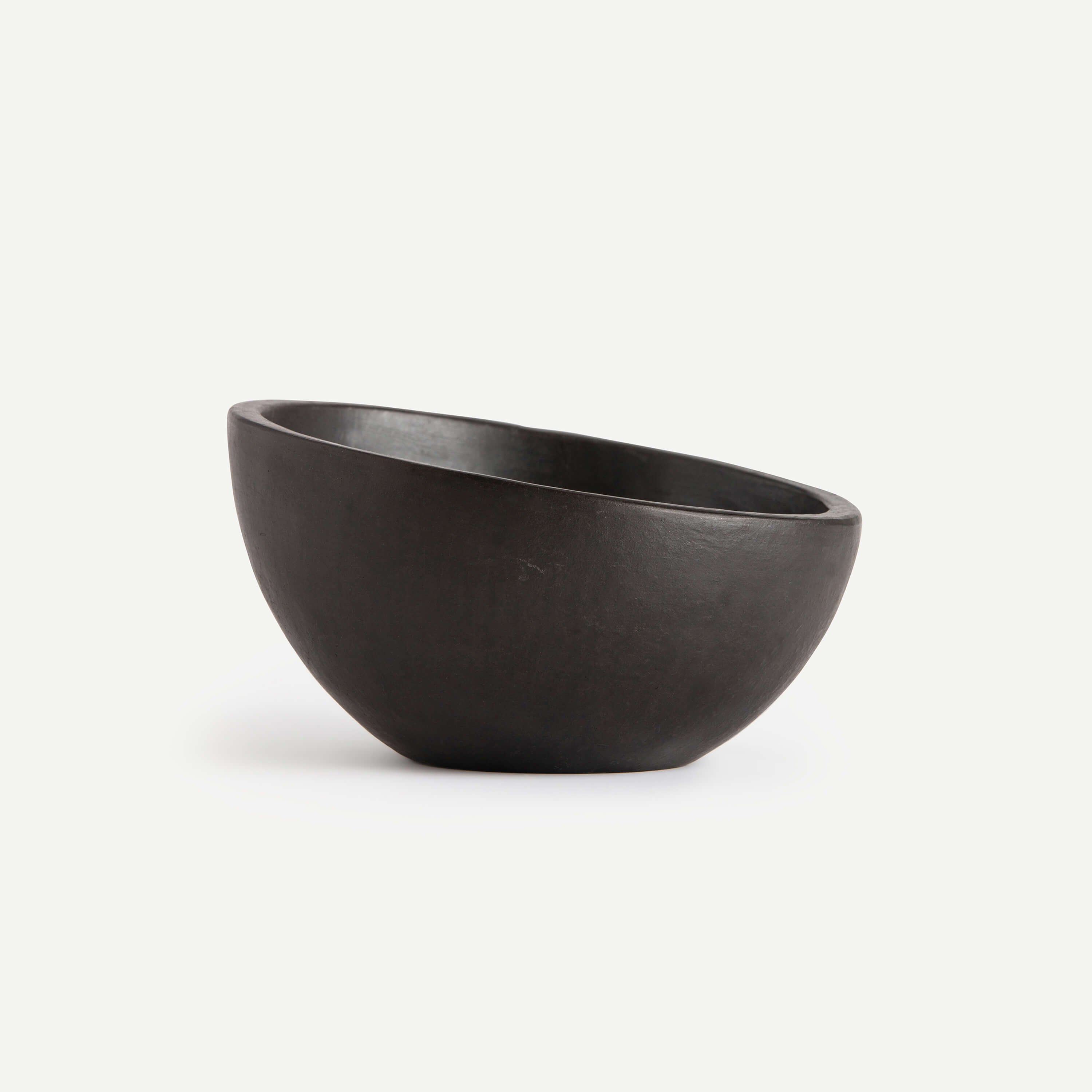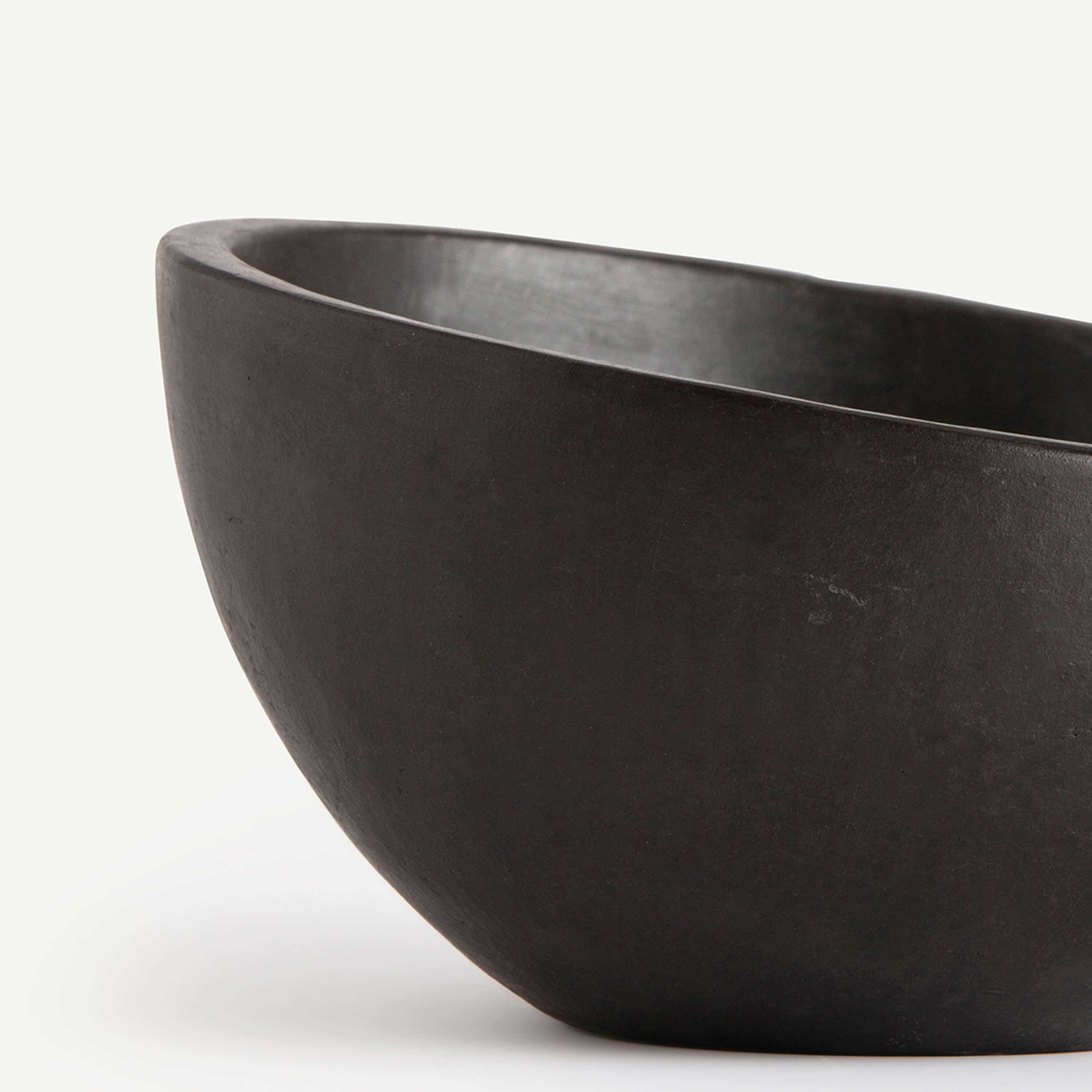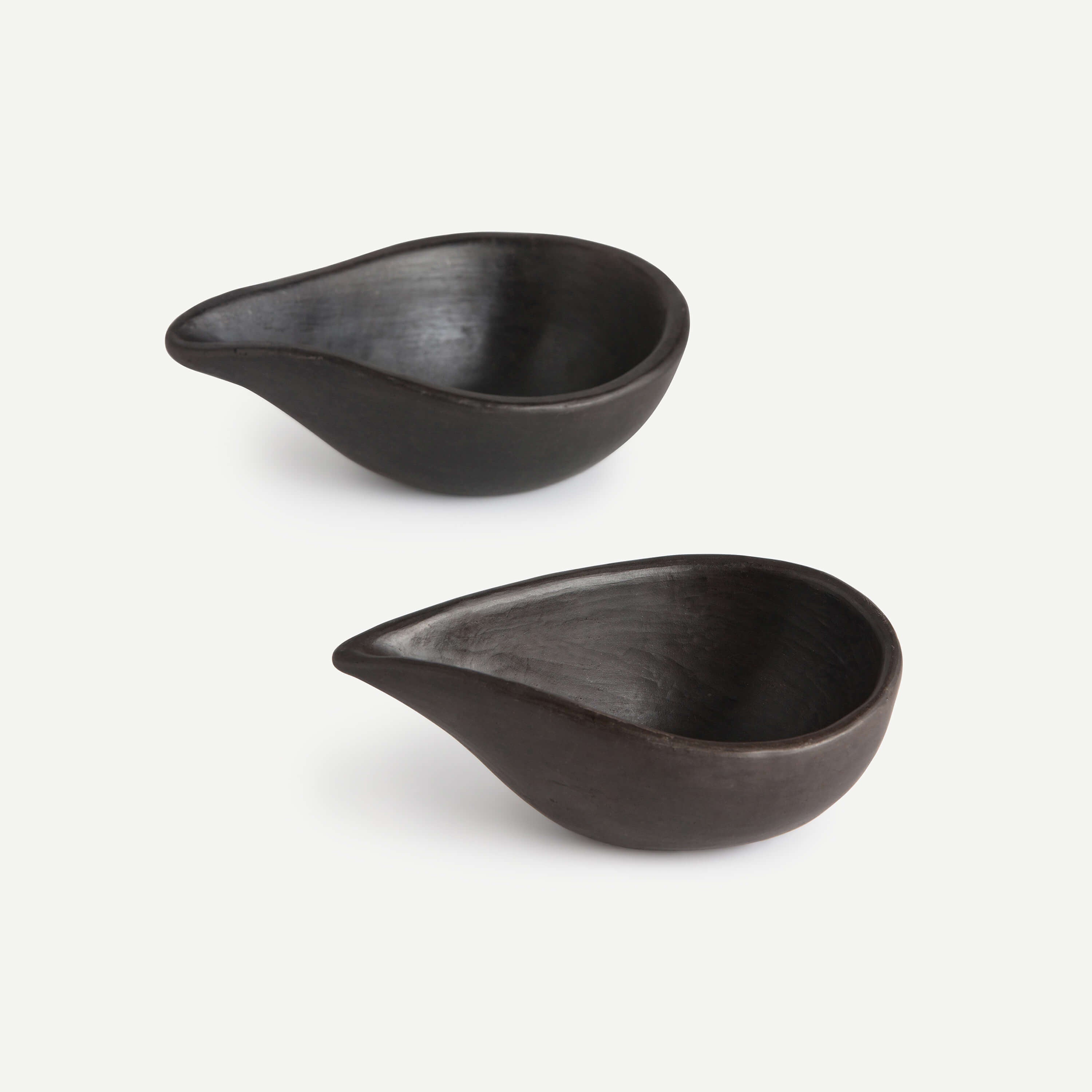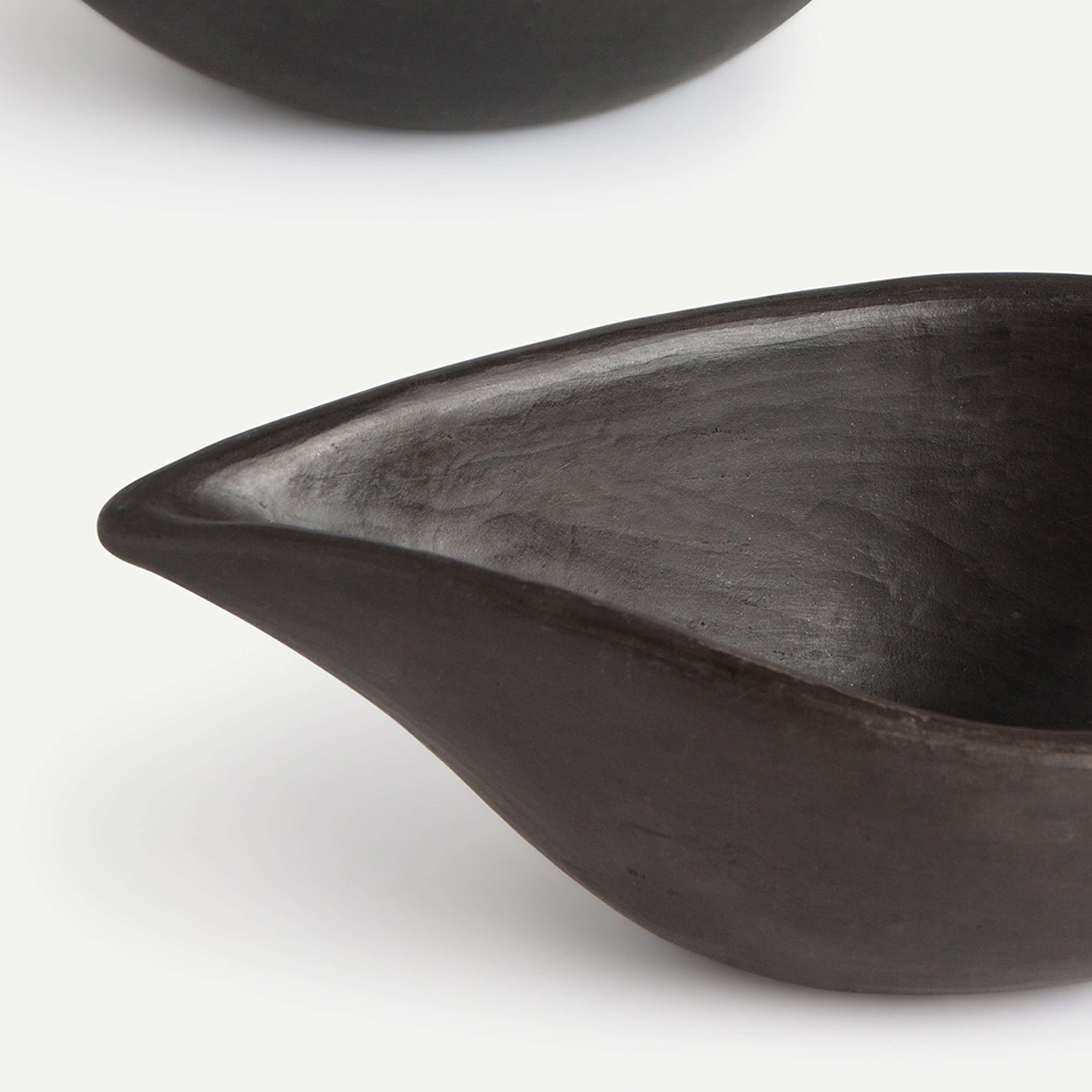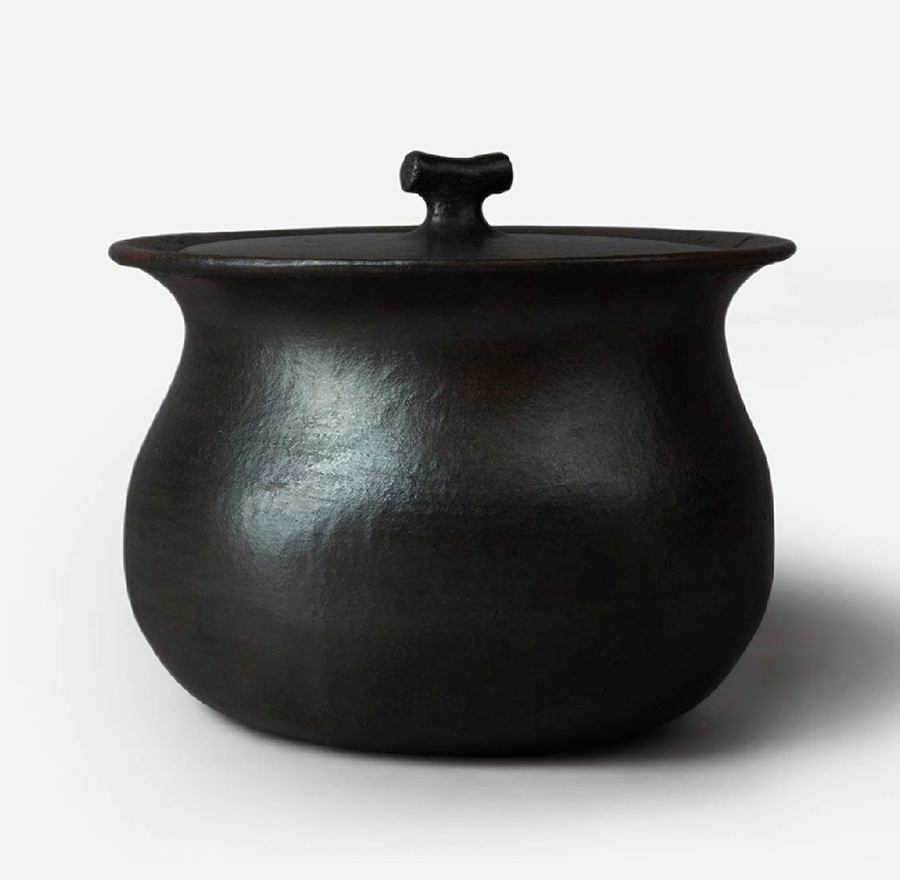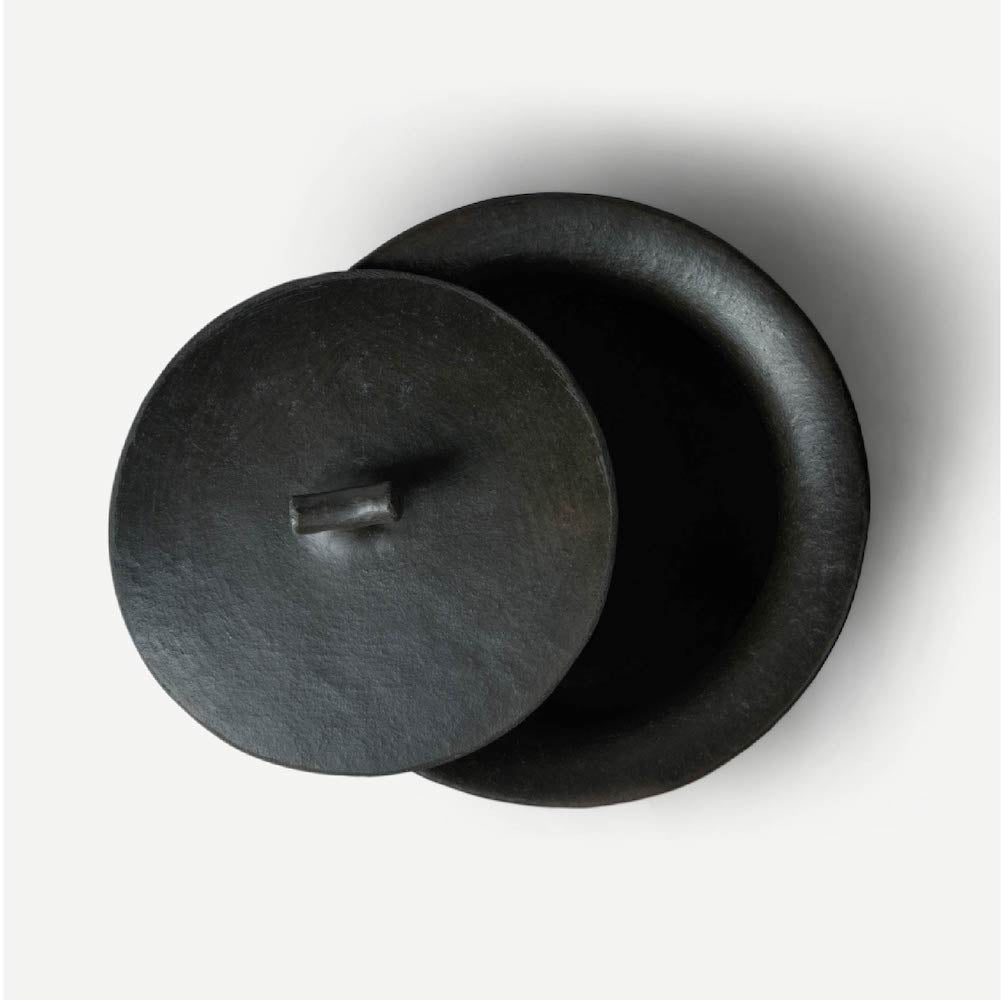IRIL SOUP BOWL
The tilt on this angled bowl sets this handcrafted piece of Longpi pottery apart .
The tilt on this angled bowl sets this handcrafted piece of Longpi pottery apart .
Craft Type: Longpi Pottery
The striking good looks of this Longpi bowl are bound to be a conversation starter. While it’s designed to be a bowl for soup, it would work just as well for a comforting bowl of khao suey or ramen. Longpi pottery is a treasured craft that is known for its black colour, its rustic quality and matte texture, and the feel of fired clay. Each product is painstakingly handcrafted over a long period of time.
This product is handcrafted and therefore slight variations in colours, textures and forms are inevitable and aren’t flaws.
Made in: Delhi
Material: Serpentine stone
Dimensions (cm): 16(L) x 16(B) x 8.2(H); Dia: 16
Dimensions (inches): 6.2(L) x 6.2(B) x 3.2(H); Dia: 6.2
Capacity: 375 ml
Weight: 415 grams
No. of pieces in a set: 1, One Bowl
Longpi pottery is a treasured craft that is known for its black colour, its rustic quality, matte texture, and the feel of fired clay. The Longpi products at Ikai Asai are handmade by craftspeople belonging to the Tangkhull Naga tribe in Manipur. They are from the Longpi Kajui and Longpi Khullen craft clusters in Manipur’s Ukhrul district. The major materials used to make Longpi pottery are locally found lishun lun stone powder and weathered rock clay powder. Most tools used in this process are handmade by the craftspeople themselves with locally available resources. For instance, the ‘hmaphapi’ is a long stick, made of grass and covered in net, that is used for shaping.
Based on the product being made, a ratio of these two powders is determined and worked into a clay dough. The dough is left to age for a few days, and it is then shaped entirely by hand or with a mould and left to dry under the shade, until it takes on a greenish hue. At this stage, some designs require our craftsmen to make holes for cane accents. Once formed, the clay product goes through multiple rounds of shade-drying until it is bisque-fired at a very high temperature (around 700º – 900ºC). The scalding artefact that comes out of the kiln is then rubbed with Chirona leaves and left to cool until ready.
- Wash by hand only, using a mild dishwashing soap. Dry using a soft towel or tissue. Avoid stacking dishes in the sink.
- When not in use, store in a clean and dry condition to ensure that it retains its natural finish. If it is being stacked, place tissues between products to avoid abrasion.
- This product is microwave-safe.
- Description
- Process & Craft
- Care
Craft Type: Longpi Pottery
The striking good looks of this Longpi bowl are bound to be a conversation starter. While it’s designed to be a bowl for soup, it would work just as well for a comforting bowl of khao suey or ramen. Longpi pottery is a treasured craft that is known for its black colour, its rustic quality and matte texture, and the feel of fired clay. Each product is painstakingly handcrafted over a long period of time.
This product is handcrafted and therefore slight variations in colours, textures and forms are inevitable and aren’t flaws.
Made in: Delhi
Material: Serpentine stone
Dimensions (cm): 16(L) x 16(B) x 8.2(H); Dia: 16
Dimensions (inches): 6.2(L) x 6.2(B) x 3.2(H); Dia: 6.2
Capacity: 375 ml
Weight: 415 grams
No. of pieces in a set: 1, One Bowl
Longpi pottery is a treasured craft that is known for its black colour, its rustic quality, matte texture, and the feel of fired clay. The Longpi products at Ikai Asai are handmade by craftspeople belonging to the Tangkhull Naga tribe in Manipur. They are from the Longpi Kajui and Longpi Khullen craft clusters in Manipur’s Ukhrul district. The major materials used to make Longpi pottery are locally found lishun lun stone powder and weathered rock clay powder. Most tools used in this process are handmade by the craftspeople themselves with locally available resources. For instance, the ‘hmaphapi’ is a long stick, made of grass and covered in net, that is used for shaping.
Based on the product being made, a ratio of these two powders is determined and worked into a clay dough. The dough is left to age for a few days, and it is then shaped entirely by hand or with a mould and left to dry under the shade, until it takes on a greenish hue. At this stage, some designs require our craftsmen to make holes for cane accents. Once formed, the clay product goes through multiple rounds of shade-drying until it is bisque-fired at a very high temperature (around 700º – 900ºC). The scalding artefact that comes out of the kiln is then rubbed with Chirona leaves and left to cool until ready.
- Wash by hand only, using a mild dishwashing soap. Dry using a soft towel or tissue. Avoid stacking dishes in the sink.
- When not in use, store in a clean and dry condition to ensure that it retains its natural finish. If it is being stacked, place tissues between products to avoid abrasion.
- This product is microwave-safe.







